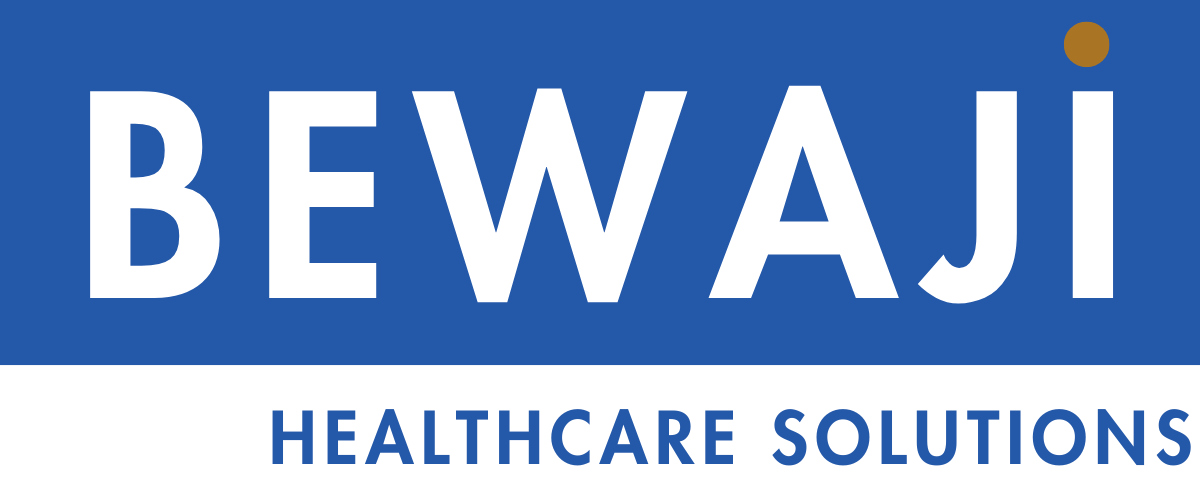In my consultations with healthcare leaders, a recurrent pattern is emerging: the absence of a pivotal initial step – identifying personal goals. Leaders, whose very essence of work revolves around distilling meaning from the world around them, need acute clarity on their personal trajectory. True leadership demands authenticity, bringing one’s genuine self to the forefront of their role. For leaders to amplify their impact, it’s imperative to discern how their current tasks and responsibilities fit into the larger mosaic of their life’s journey.
Furthermore, In today’s fast-paced and evolving landscape, the ability to set and pursue goals emerges as a cornerstone for individual and collective progress. This essay and others to follow will explore the importance of goal setting, discuss different perspectives, and provide practical frameworks for crafting achievable goals.
A study by Locke and Latham (1990) found that individuals who consistently set specific and challenging goals outperformed those who did not set goals or vague goals. The study showed that goal setting increased motivation, focus, and persistence, leading to higher levels of achievement. A survey conducted by Gollwitzer and Oettingen (2013) found that individuals who set goals and developed implementation intentions, or specific plans for achieving their goals, were more likely to succeed than those who only set them. Additionally, companies like Google and Amazon have attributed their success to the practice of setting ambitious goals and working toward them.
Countless successful individuals, such as Elon Musk, Oprah Winfrey, and Bill Gates, attribute their accomplishments to setting clear goals and working towards them. However, it is essential to acknowledge that goal setting may only sometimes lead to success. Some critics argue that setting rigid goals can lead to stress, burnout, and a narrow focus on outcomes, potentially overlooking other essential aspects of life. Additionally, external factors beyond an individual’s control, such as economic conditions or unforeseen circumstances, can impact the achievement of goals. While goal setting can be a powerful tool for personal and professional growth, it is crucial to approach it with flexibility and adaptability.
The Underlying Science of Goal Setting
The human spirit desires to achieve, grow, and transform. This intrinsic motivation finds its structure and direction by setting goals. Scientific research, corroborated by countless real-life success stories, shows that setting well-defined goals can significantly amplify one’s chances of success.
- The Clarity Principle: The concept of clarity is often emphasized as a cornerstone in setting and achieving goals. The idea is that the more specific and clear you are about what you want to achieve, the easier it will be to make progress towards that goal. Without a clear vision or a well-defined objective, you’re more likely to wander aimlessly, losing focus and momentum. Being vague about your goals can result in wasted effort and can even set you up for failure. Thus, clarity serves as the first step in goal-setting, allowing you to know exactly what you’re aiming for, which in turn enables you to outline a concrete plan for achieving it.
Clarity remains a cornerstone in goal setting. Brian Tracy’s “Goals!” echoes this sentiment by pointing out that a clear vision allows you to channel your subconscious mind toward achieving specific aims. Clarity serves as the lens through which all your efforts are focused, making your actions more effective and purposeful. - Direction: Having a sense of direction is another crucial aspect of effective goal setting. After you’ve clarified what you want to achieve, the next step is to map out the route that will get you there. This involves breaking down the goal into smaller tasks, establishing a timeline, and creating a framework or strategy to guide your actions. A well-defined direction helps to align your daily activities with your ultimate goal, ensuring that each step you take is purposeful and effective. Without direction, even the most clearly-defined goals can become unattainable as you may lose your way in the maze of possibilities.
Direction is like the compass of your life journey, as highlighted by Brian Tracy in “Goals!”. A well-defined path, broken down into actionable steps, ensures that each move you make aligns with your ultimate objective. Direction serves as a roadmap, minimizing wasted efforts and ensuring each step you take brings you closer to your goal. - The Habit Loop: The formation of good habits is often cited as a key to achieving long-term goals. Habits serve as the building blocks of progress, enabling you to make consistent strides towards your objectives without having to rely solely on willpower or motivation. Effective habits also free up mental energy by automating certain tasks, allowing you to focus on more complex challenges and decisions. In essence, the right habits can make the journey towards your goals smoother and more manageable, drastically increasing your chances of success.
James Clear’s “Atomic Habits” adds a nuanced layer to our understanding of habits in goal setting. According to Clear, habits are not just repeated actions but the architecture of your life. He emphasizes that small changes in habits can lead to significant improvements over time. This resonates with Brian Tracy’s perspective, uniting the theme that habits are foundational to long-term success. - The Power of Persistence: Persistence, or the ability to continue striving towards your goals despite challenges and setbacks, is often noted as one of the most important traits for achieving success. The journey to any worthwhile goal is rarely smooth; it’s filled with obstacles, detours, and moments of doubt. Persistence allows you to navigate through these difficulties and continue making progress. Without persistence, you’re more likely to give up at the first sign of hardship, rendering even the most well-defined goals unattainable.
Alex Banayan’s “The Third Door” brings the quality of persistence into sharp focus. In his book, Banayan illustrates through various stories that persistence in knocking on different ‘doors’ can eventually lead to success, even when faced with repeated failures and rejections. This aligns with Brian Tracy’s view that persistence is the bedrock on which goals are achieved, emphasizing that resilience and tenacity are key differentiators between success and failure. - Progressive Milestones: Setting and achieving progressive milestones is a strategy often recommended for making daunting goals more manageable. The idea is to break down a large, intimidating objective into smaller, more achievable tasks. Each completed task serves as a milestone, marking your progress and giving you a sense of accomplishment. This strategy not only makes your goals more achievable but also provides regular boosts of motivation, keeping you engaged and focused throughout your journey.
Diverse Domains of Goal Setting
While the process and methodology of setting goals might have universal elements, the domains these goals span can be incredibly diverse. This diversity reflects the multifaceted nature of human desires, aspirations, and areas of growth.
- Career Goals: These pertain to one’s professional aspirations and trajectories. Whether reaching a particular position, mastering a skill set, transitioning industries, or even entrepreneurial ambitions, career goals guide our professional endeavors.
- Financial Goals: Financial security and growth are paramount in an increasingly material world. These goals can be multifaceted, ranging from short-term objectives like holiday savings to long-term goals like retirement planning or achieving a specific net worth.
- Health Goals: Physical and mental well-being are foundational to all other goals. Whether it’s adopting a fitness regimen, achieving a target weight, prioritizing mental health, or overcoming specific health challenges, these goals directly impact the quality of our lives.
- Relationship Goals: Human beings are inherently social creatures, making relationship goals vital. These can span personal relationships, like strengthening familial bonds or fostering romantic partnerships, to professional ones, like expanding one’s network or building a robust team.
- Personal Growth Goals: Personal growth is an endless journey. Goals in this domain can range from learning new skills, languages, or instruments to traveling and gaining new experiences to spiritual and philosophical growth.
Making goals meaningful
The concept of setting meaningful goals goes beyond merely creating objectives that are specific, measurable, achievable, relevant, and time-bound (SMART). While these attributes are important for effective goal-setting, meaningful goals add an emotional and psychological dimension to the equation, making the journey toward achieving them more fulfilling and sustainable.
Why Meaningful Goals Matter
Meaningful goals resonate with your core values and beliefs, giving you a higher sense of purpose. This sense of purpose can be a powerful motivator, far surpassing the temporary enthusiasm that often accompanies more superficial goals. When you’re driven by a goal that has deep personal significance, you’re more likely to persevere through challenges and setbacks. As Alex Banayan highlights in “The Third Door,” persistence often becomes easier when you’re motivated by something deeply meaningful to you.
Attributes of Meaningful Goals
Brian Tracy in “Goals!” mentions that one of the attributes of a meaningful goal is its alignment with one’s life direction and personal values. These goals are not just endpoints but journeys that lead to personal growth and transformation. They often involve something bigger than oneself, maybe a contribution to the community or a lasting legacy. Such goals provide a sense of fulfillment and happiness that transient goals can’t offer.
Role of Habits in Achieving Meaningful Goals
James Clear’s insights in “Atomic Habits” are particularly relevant here. Meaningful goals often require meaningful habits. These are habits that align not just with achieving an objective but with embodying the type of person you wish to become. When habits are structured around your identity and values, they become self-reinforcing. Achieving your goal becomes not just a matter of reaching a specific target but of living out your values daily.
Crafting Achievable Goals
We’ve all heard of the SMART framework, an acronym that emphasizes Specificity, Measurability, Achievability, Relevance, and Time-bound criteria. While this model offers a robust foundation for crafting goals, contemporary thought leaders like Michael Hyatt and Mark Murphy have introduced extended and alternative frameworks that cater to the evolving complexities of personal and professional aspirations.
The SMARTER Framework by Michael Hyatt: Building on the traditional SMART model, Hyatt adds two crucial elements:
- E for Exciting: Goals should not only be achievable and relevant, but they should also inspire enthusiasm. A goal that excites me is more likely to be pursued with passion and vigor.
- R for Relevant: While the traditional SMART model also includes relevance, Hyatt underscores its importance, suggesting that a goal aligned with one’s core beliefs and long-term vision holds more motivational power.
- R for Risky: Risky goals are those that are ambitious. They’re not the low-hanging fruit or the tasks we can easily achieve with minimal effort. Instead, they’re goals that might initially seem daunting or out of reach. The idea behind setting such goals is that they drive higher levels of performance, engagement, and motivation. When we aim higher, even if we fall slightly short, we often achieve more than if we had set a safer, more easily attainable goal.
The HARD Framework by Mark Murphy:
- H for Heartfelt: Murphy believes that for a goal to be truly effective, it should resonate emotionally. It should align with one’s passions, values, connections to others, or a bigger purpose.
- A for Animated: This pertains to visualizing the goal. Murphy emphasizes the importance of visualizing the process and the result.
- R for Required: It suggests the goal should feel so indispensable that it feels like a non-negotiable.
- D for Difficult: Aligning with the idea of goals being challenging in the SMART framework, Murphy emphasizes that goals should push boundaries and take individuals out of their comfort zones.
Comparing the Frameworks:
While the traditional SMART model offers a structured approach to goal setting, the SMARTER framework by Hyatt and HARD model by Murphy add layers of emotional and visual resonance. The core similarity across all frameworks is the emphasis on specificity, challenge, and relevance. However, while SMART focuses more on the practicality and structure of goals, SMARTER and HARD dive deeper into the emotional and motivational aspects. They emphasize the ‘why’ behind the goal, ensuring that the objective resonates on a deeper, more personal level. Including visualization in the HARD model and excitement in the SMARTER model ensures that the goals are not just tasks we must achieve but visions to realize.
While the traditional SMART framework offers a solid foundation for goal setting, the SMARTER and HARD models provide a more holistic approach, encompassing aspirations’ cognitive and emotional facets. Embracing these comprehensive frameworks ensures our goals are achievable, profoundly motivating, and fulfilling. I find that the latter two expand our understanding of the SMART framework. In my goal-setting, I use them to bring further clarity and meaning to my personal goals.
In conclusion, goal setting is a powerful personal and professional growth tool. It increases motivation, focus, and persistence, leading to higher levels of achievement. While goal setting may not guarantee success in all cases and external factors can impact goal achievement, it is essential to approach goal setting with flexibility and adaptability. By incorporating the insights and frameworks discussed in this essay, individuals can craft achievable goals that inspire and guide their journey toward personal and professional evolution.



